Miller Hull
- Portfolio
- Approach
- News
Events
Posted May 15, 2025
- About
- Connect
How can heat-trapping surface parking associated with the strip mall be reclaimed for urban agriculture returning soil-based farmland to nature?
Reclaiming the Strip Mall
Strip malls are everywhere. While they provide convenient access and affordable commercial space for a diverse tenant mix, their expansive surface parking and lack of human-scaled connection to adjacent neighborhoods have a deadening impact on our communities. A universal shift in the way we treat this pervasive typology could result in massive change.
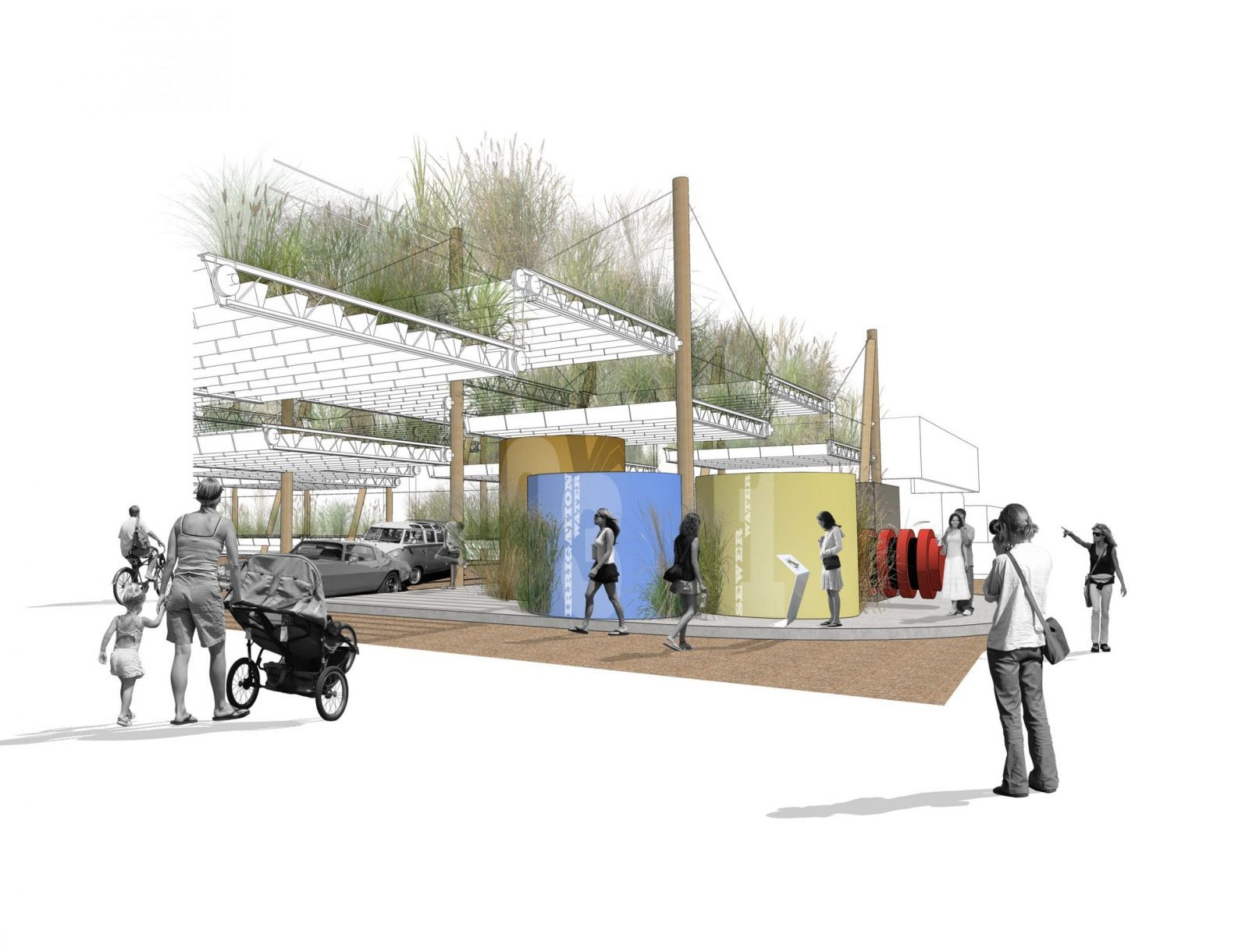
Aeroponic Parasol
Bumper Crop is a soil-less farm irrigated with reclaimed waste water and suspended above the strip mall parking lot to shade the ground plane reversing the heat-island effect. Reclaimed water from the city sewer main by means of a packaged membrane bioreactor, supplies the crop with nutrient-rich irrigation water: an oasis in the asphalt desert.
Land currently used for parking is reclaimed for urban agricultural production thereby returning farmland to nature and repairing the ecosystems that have been sacrificed for soil-based agriculture. By producing food crops above the strip mall parking lot, a carbon-neutral cycle is achievable due to reduced food transportation and a vegetated carbon sink above previously heat-trapping surface parking. The introduction of a second tier of use doubles the income-generating potential of the land for the strip-mall developer. This reclaimed land creates an opportunity for a new generation of urban farmers to emerge equipped to install, maintain and harvest the suspended crops as franchises for profit, leasing the structures to the strip mall owner who would benefit from a shaded parking lot, reduced cooling loads, and an improved customer experience.
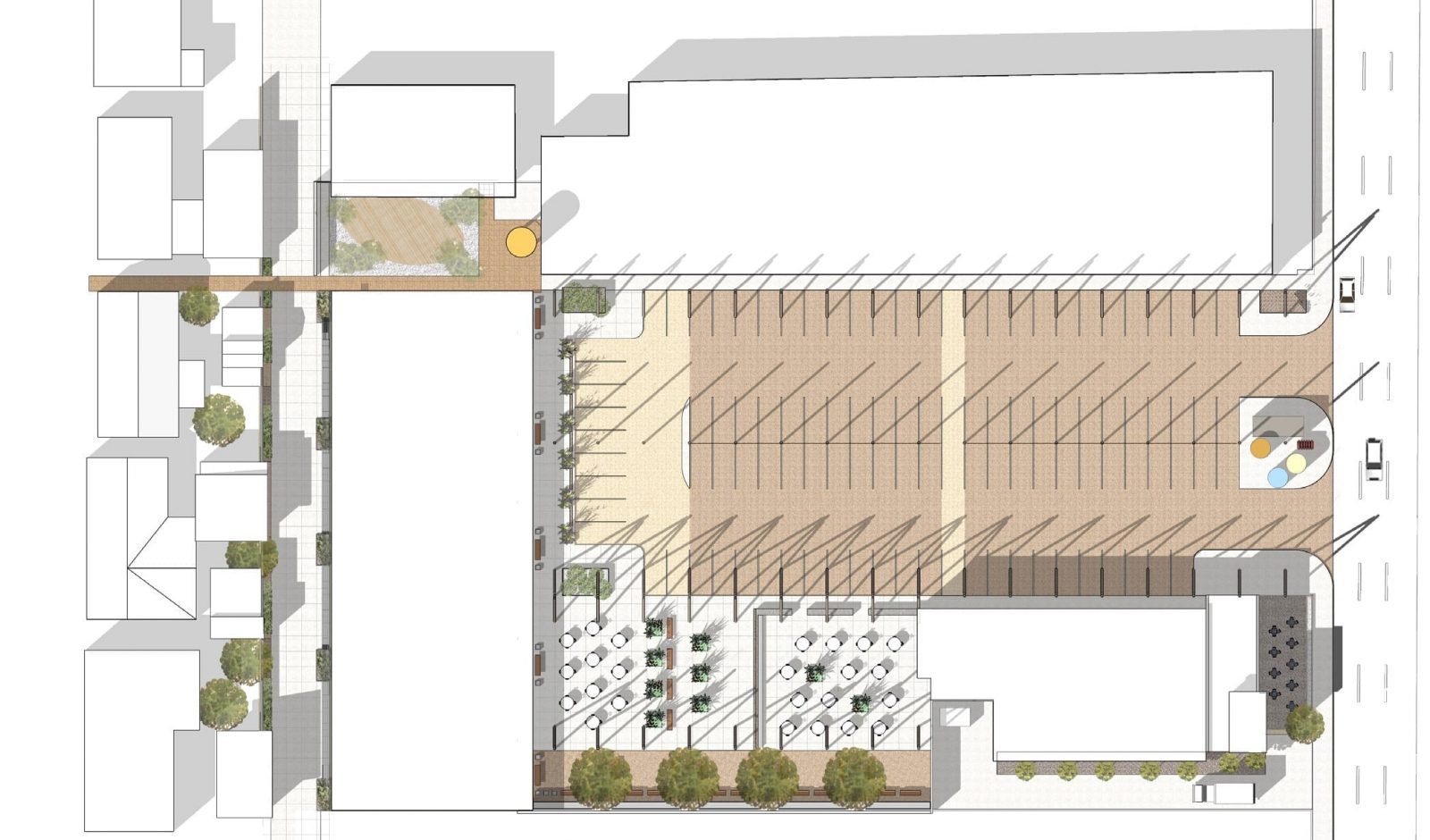
Aerial Farm
Even in the harsh Arizona desert, bumper crops of corn, flax, and cotton will thrive by utilizing aeroponics. A method of growing plants without soil utilizing a sealed root chamber and vapor mist to deliver water and nutrients, aeroponics require only a fraction of the amount of water required for traditional farming. Because the system does not require soil, it can be very lightweight and even elevated.Windmills on select poles pump water and pressurize the system for low wind periods. These windmills provide simple and direct renewable energy.
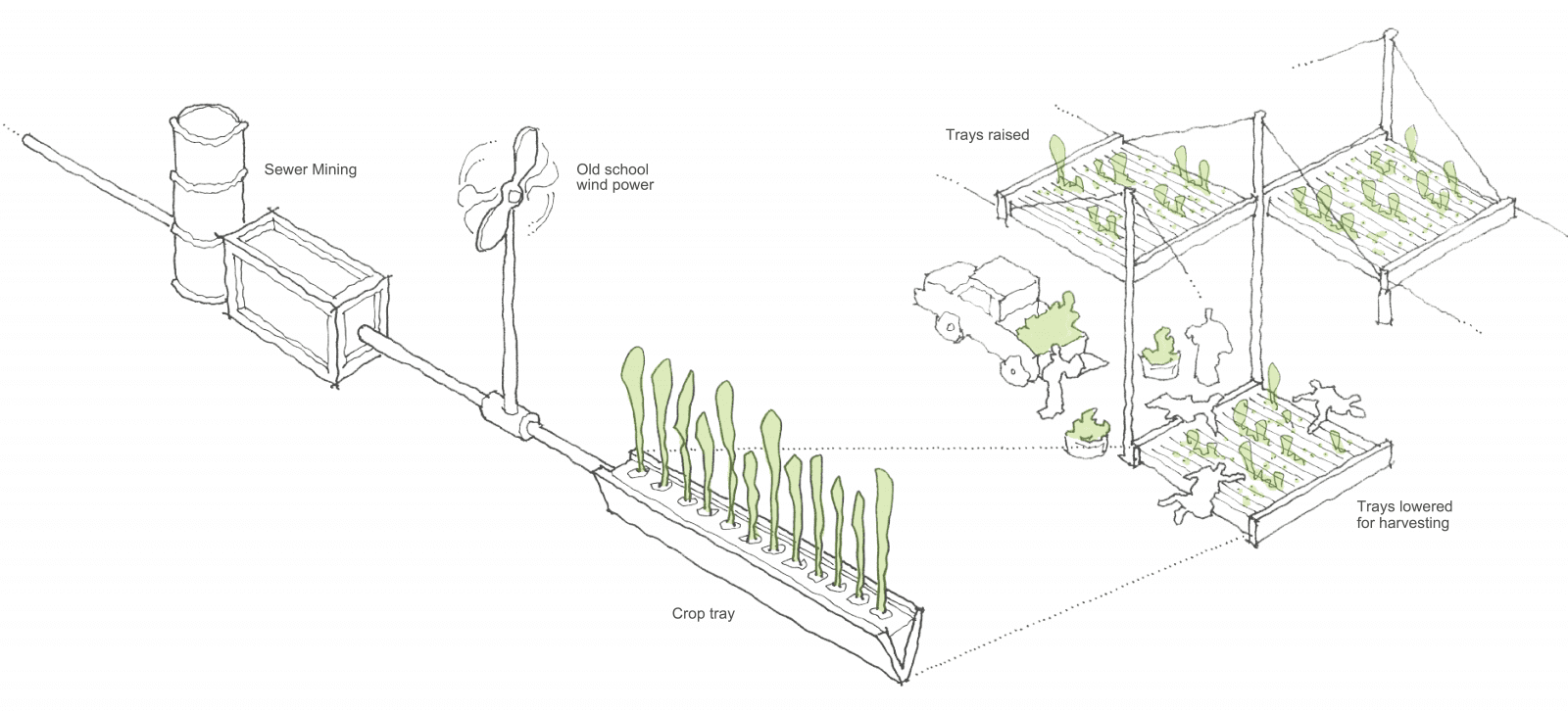
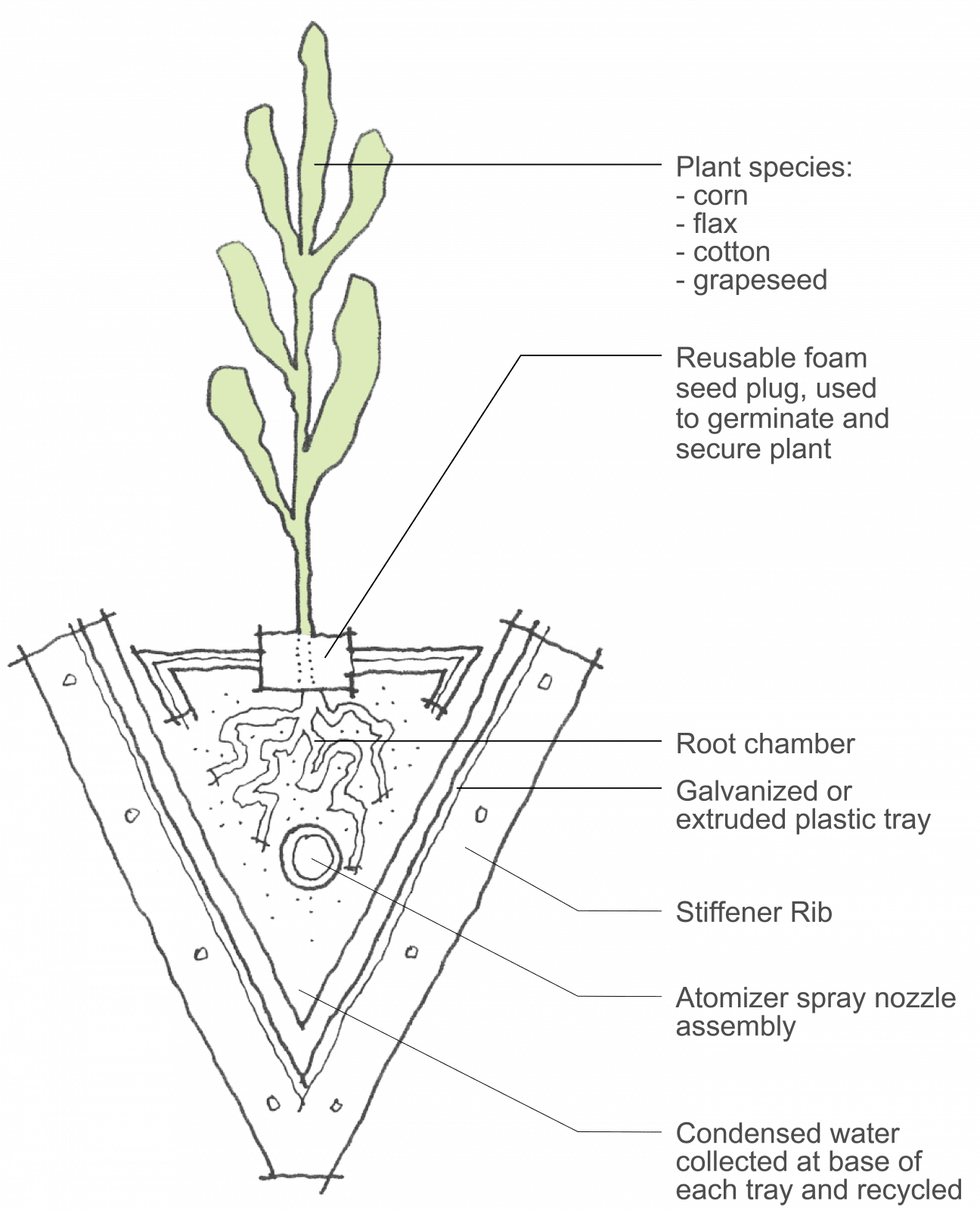
Sewer Mining
Sewer mining is the process of tapping directly into a city sewer main and extracting wastewater for treatment and reuse as recycled water. The use of sewer mining is widespread in Australia where drought has resulted in a water shortage. By tapping the existing waste water supply that runs beneath most arterial streets, a virtually unlimited supply of irrigation water is made available to support the aeroponic farming operation. A packaged membrane bio-reactor is used to treat 5,000 gallons of Class A irrigation water per day enough to support the one acre aeroponic operation on-site.
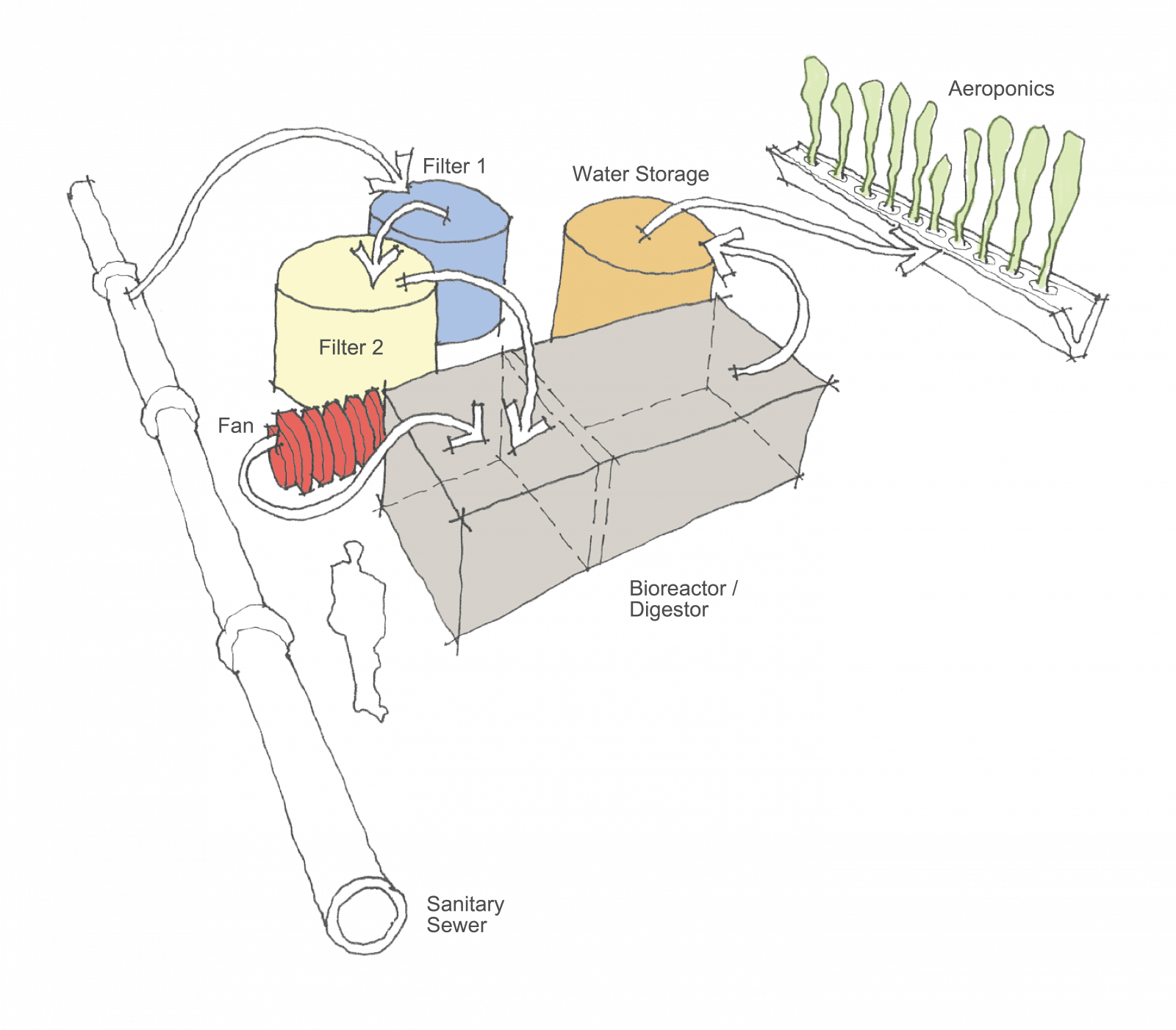
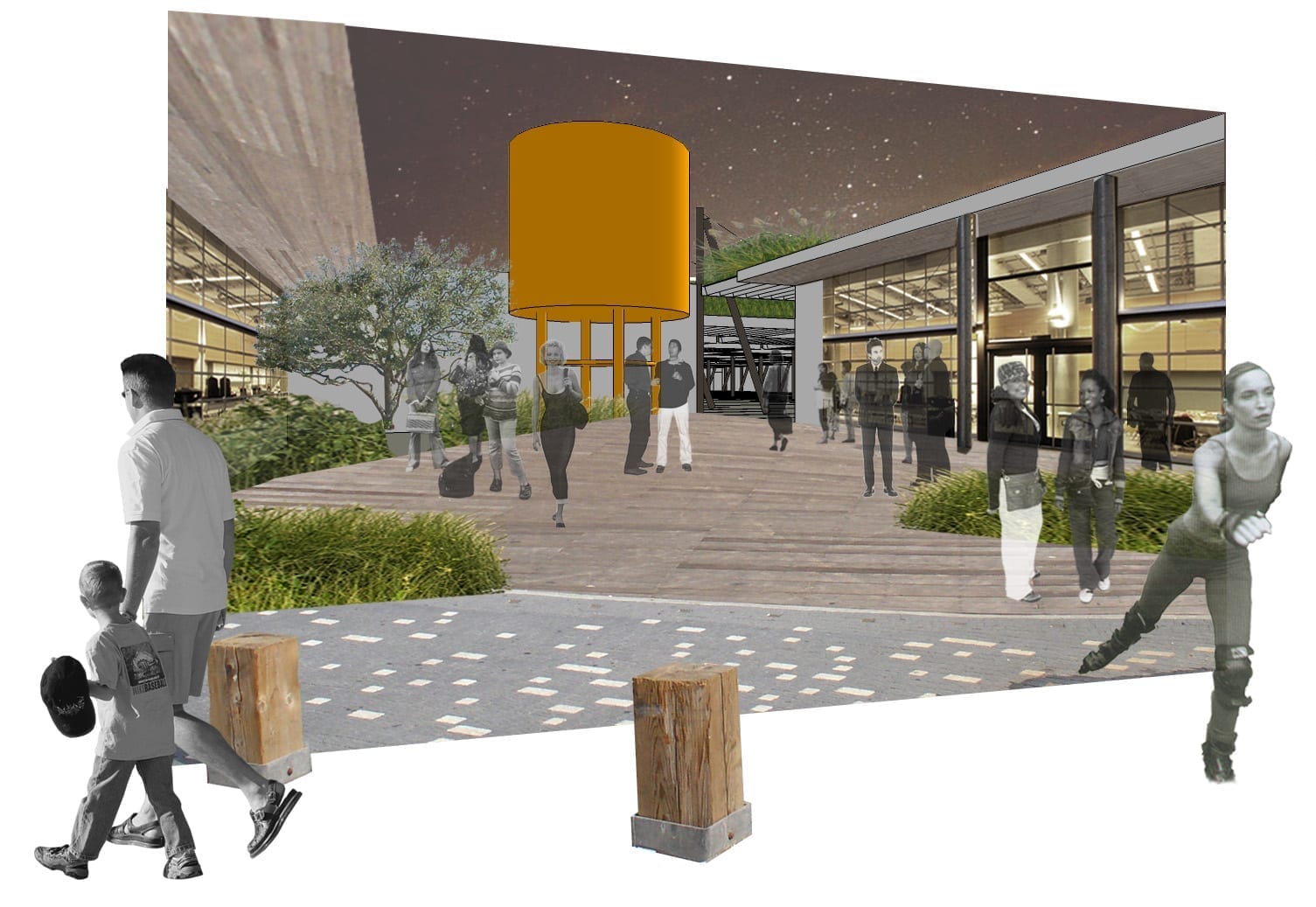
Alley Life
By repurposing the west building to address both the parking lot and the alley, the strip becomes accessible to the community and parking demand is reduced. Up-zoning the adjacent residential properties allows small mixed-use structures which creates small business opportunities within walking distance to homes. Second story apartments above increase neighborhood density and provide “eyes” on the alley. Increased property values result in a “win-win” for both the community and property owners along the alley. The dead, vacant alley, a virtual “no mans land,” is transformed into a vital pedestrian link. The transition from commercial to residential is eased and the pedestrian is invited back into the site.

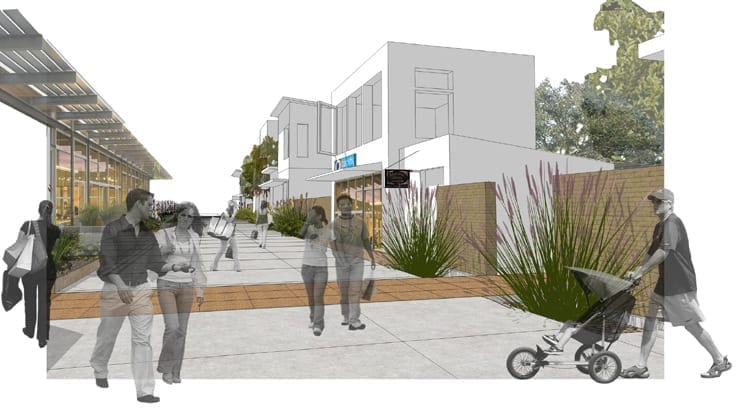
Systems
Recycled telephone poles are used for the primary supports and steel cable is strung between the poles to create a tensile truss that supports the kinetic farming operations below.Raising and lowering the aeroponic trays relies on simple block & tackle mechanics. Steel cables run from the trays through blocks across the tensile truss and down to a manually operated winch attached to the pole. Each tray can be raised and lowered independently and is not unlike the hoisting and lowering of a sail.
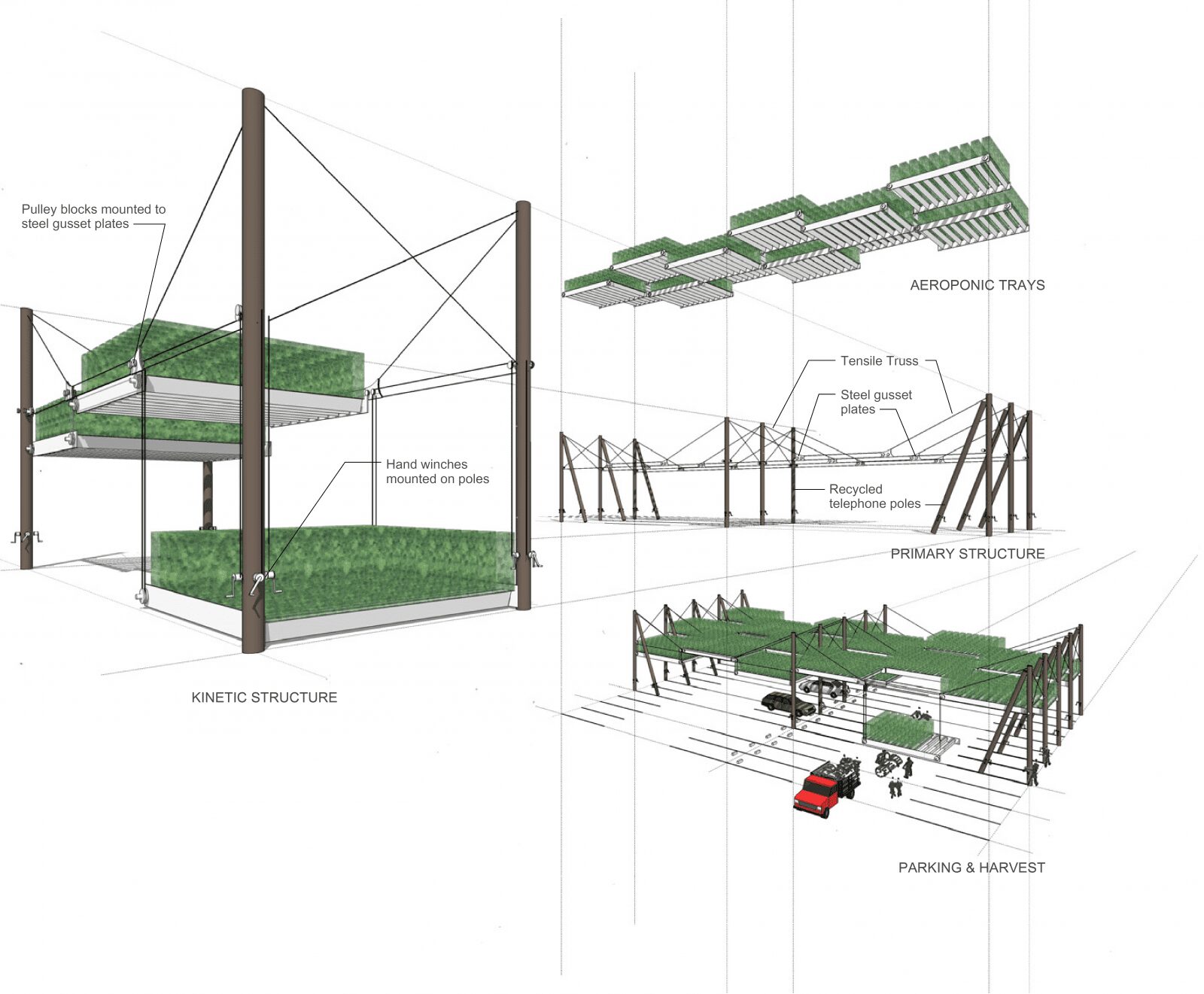
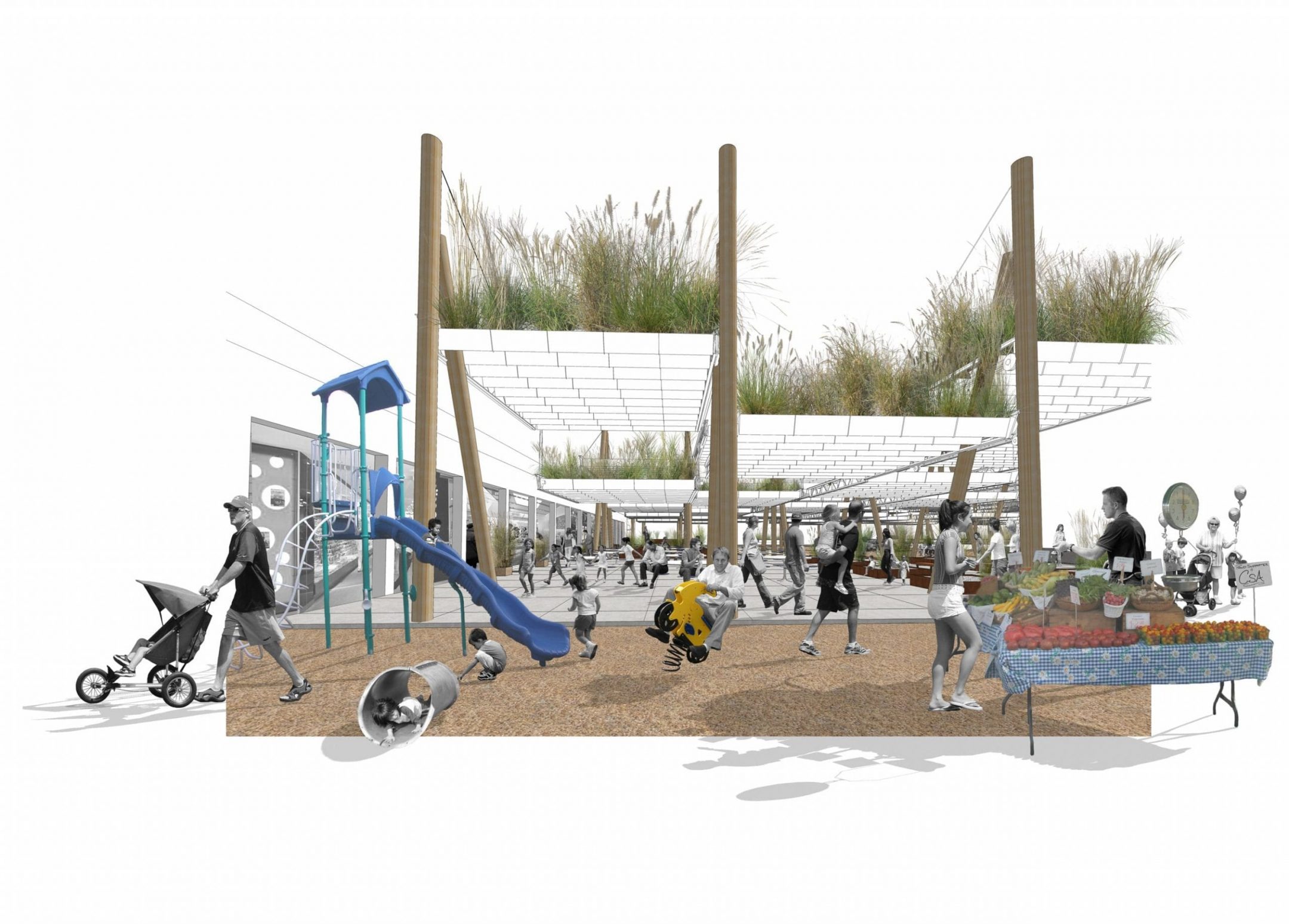 ××
××